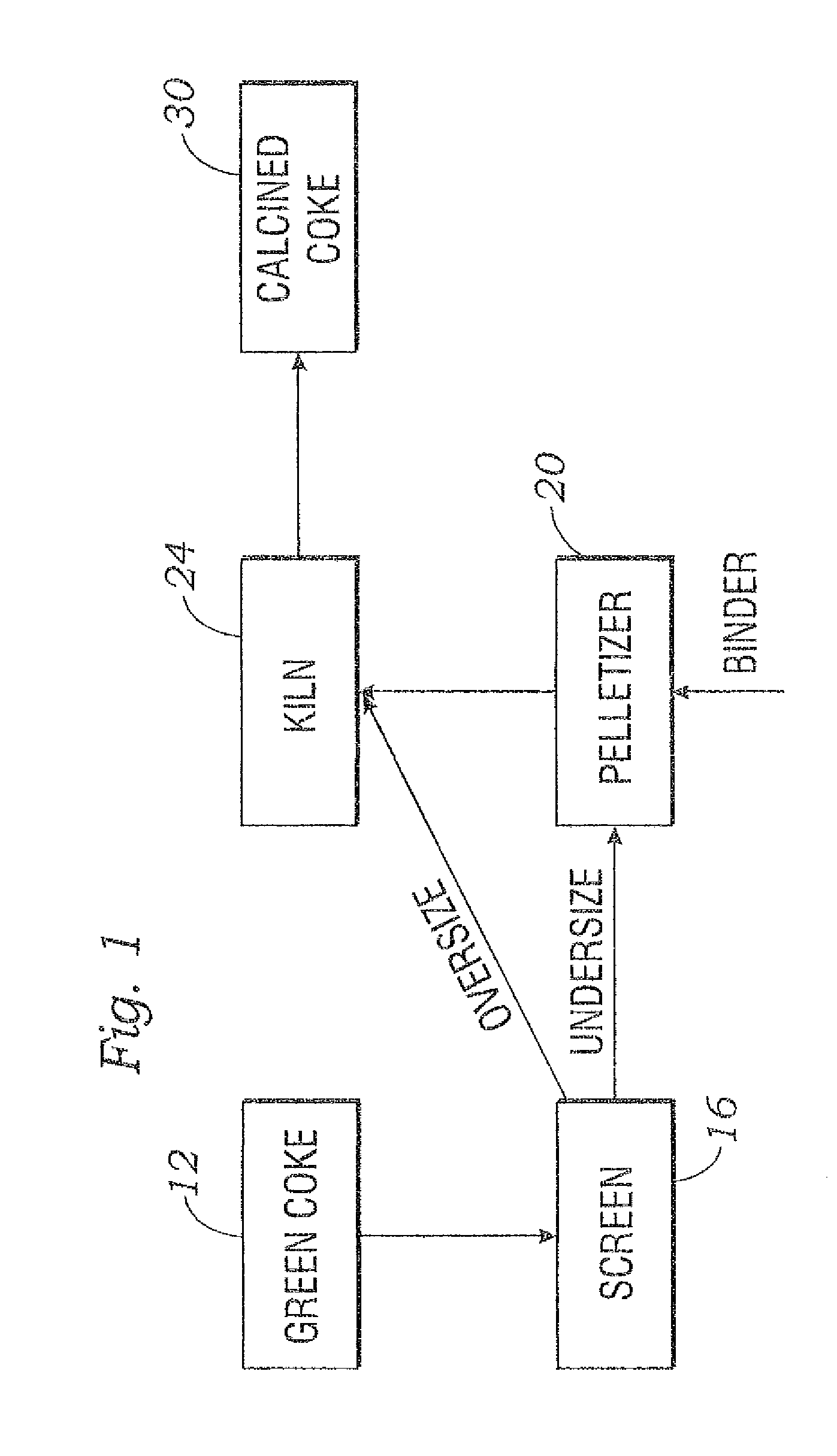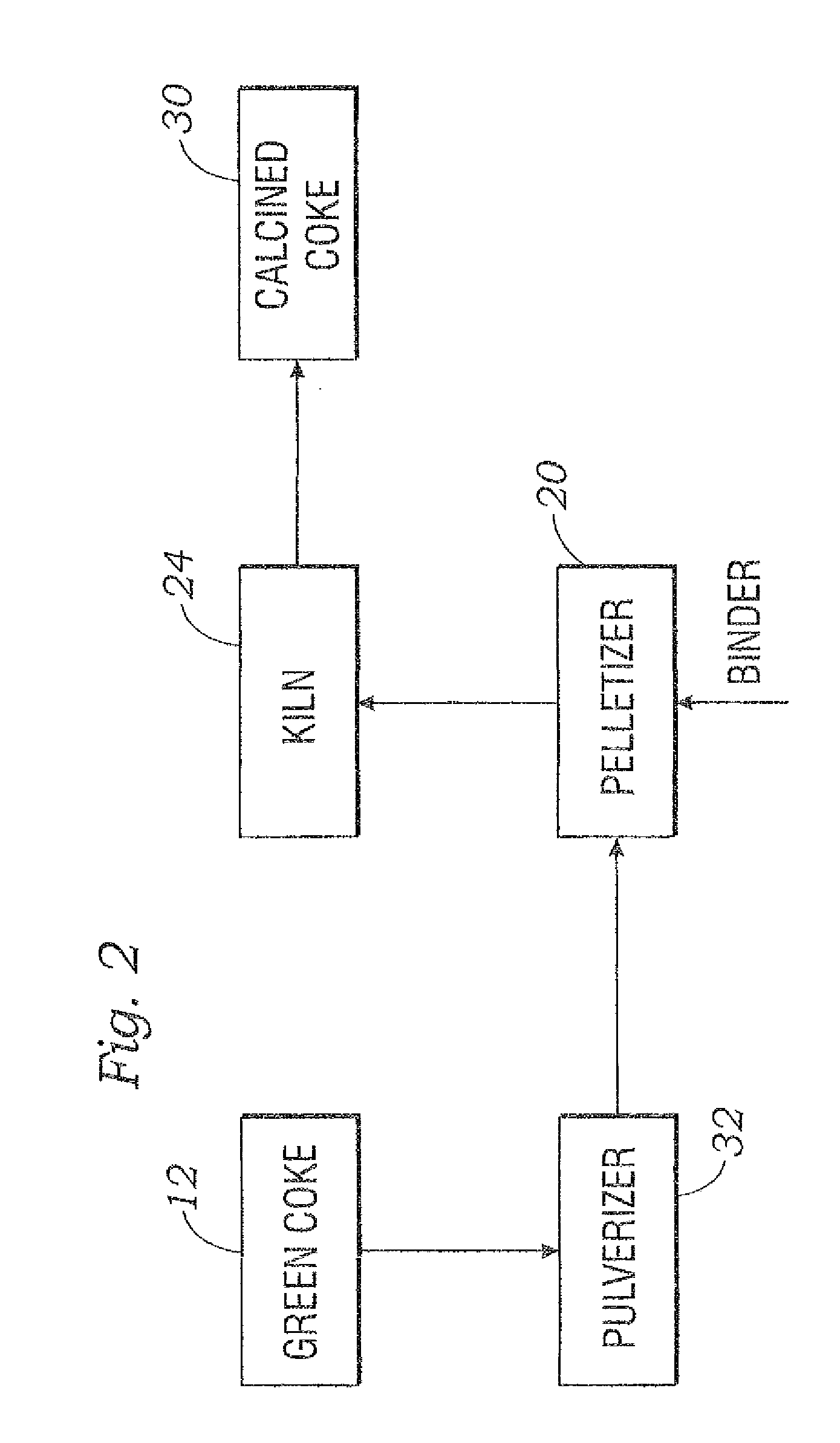Pelletization and calcination of green coke using an organic binder
a technology of organic binder and green coke, which is applied in the petroleum industry, solid fuels, waste based fuels, etc., can solve the problems of reducing the quality of incremental production and a large amount of new products, and achieves more uniform, dense and high green strength pellets. , the effect of better control of the pelletization process
- Summary
- Abstract
- Description
- Claims
- Application Information
AI Technical Summary
Benefits of technology
Problems solved by technology
Method used
Image
Examples
Embodiment Construction
[0016]Rotary kilns and shaft kilns have been used successfully for many years to produce calcined coke which is the primary raw material for making carbon anodes used in the electrolytic production of aluminum.
[0017]The primary goals of calcining green coke are to:
[0018]1. Remove volatile matter (VM);
[0019]2. Densify the structure to avoid shrinkage of coke during anode baking; and
[0020]3. Transform the structure into an electrically conductive form of carbon.
[0021]Rotary kilns, are large diameter, sloped refractory lined steel-shelled cylinders which rotate during operation. Green coke is fed continuously in one end and calcined coke is discharged from the other end at 1200-1300° C. The coke bed loading in the kiln is low (7-10% of the cross-sectional area) and heat is transferred to the coke bed predominantly by radiative and convective heat transfer from the counter-current gas stream and refractory lining. 40-50% of the VM is combusted inside the kiln and the rest is combusted i...
PUM
| Property | Measurement | Unit |
|---|---|---|
| particle size | aaaaa | aaaaa |
| particle size | aaaaa | aaaaa |
| particle size | aaaaa | aaaaa |
Abstract
Description
Claims
Application Information
 Login to View More
Login to View More - R&D
- Intellectual Property
- Life Sciences
- Materials
- Tech Scout
- Unparalleled Data Quality
- Higher Quality Content
- 60% Fewer Hallucinations
Browse by: Latest US Patents, China's latest patents, Technical Efficacy Thesaurus, Application Domain, Technology Topic, Popular Technical Reports.
© 2025 PatSnap. All rights reserved.Legal|Privacy policy|Modern Slavery Act Transparency Statement|Sitemap|About US| Contact US: help@patsnap.com


